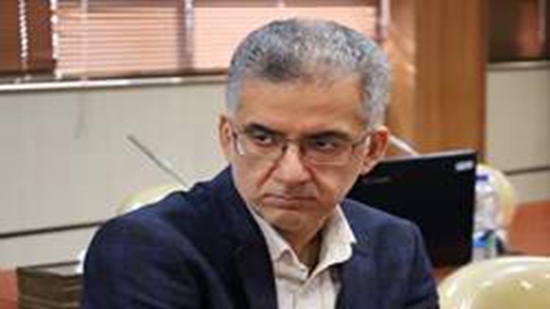Rehabilitation efforts should begin within the first 24 to 48 hours after a stroke
On the eve of World Stroke Day, Dr. Mohammad Sayad nasiri, head of Rofeideh Rehabilitation Hospital, emphasized that multidisciplinary rehabilitation should start based on the patient's tolerance during this critical period. In the country, between 250 to 300 people suffer a stroke daily.

According to the public relations department of Rofeideh Rehabilitation Hospital, Dr. Sayad nasiri highlighted that approximately 15 million people worldwide experience some form of stroke each year; of these, 5 million die from its effects and complications, while another 5 million suffer permanent disabilities that significantly impair their quality of life and that of their families, placing a considerable burden on healthcare systems.
Dr. Sayad nasiri explained what a stroke is, describing it as a neurological disorder caused by impaired blood flow to a specific area of the brain. During a stroke, blood flow to part of the brain suddenly stops, leading to a lack of oxygen and nutrients that can cause brain cells in that area to die, disrupting the functions performed by the affected brain region.
He noted that blood flow disruption can occur due to vessel blockage from a blood clot or a rupture in a blood vessel. There are two main types of stroke: ischemic stroke, caused by a blocked blood vessel in the brain, and hemorrhagic stroke, resulting from a ruptured vessel, leading to bleeding in brain tissue. Blood clots can form in the brain itself, or they may originate from the heart or major blood vessels outside the skull. Maintaining a healthy lifestyle can help prevent strokes.
A faculty member from The University of Social Welfare and Rehabilitation Sciences discussed the risk factors for strokes, many of which are modifiable. Dr. Sayad nasiri emphasized that factors such as high blood pressure, diabetes, high cholesterol, obesity, lack of physical activity, smoking, and heart diseases can be managed through lifestyle changes and appropriate treatments.
While strokes are typically associated with older age, they can occur at any age for individuals exposed to risk factors. Moreover, although a family history of strokes is an unmodifiable risk factor, individuals can still reduce their overall risk by managing other modifiable factors.
The neurologist identified common stroke symptoms, which include facial drooping, weakness in one arm and leg, and difficulty speaking. It is crucial to seek medical attention immediately if these symptoms are observed.
Dr. Sayad nasiri further explained that the symptoms can vary based on the part of the brain affected by the stroke, including reduced strength or paralysis in limbs (especially on one side of the body), decreased sensation, speech difficulties, blurred or double vision, dizziness, imbalance, and severe headaches accompanied by nausea and vomiting. Importantly, all these symptoms occur suddenly, often starting mild and intensifying in minutes.
He stressed the importance of early diagnosis, asserting that prompt detection is crucial since brain tissue is lost the longer a stroke goes untreated. Everyone should be educated about the signs and symptoms of strokes and seek medical assistance or call emergency services immediately upon observation of these symptoms.
Discussing treatment options for acute stroke patients, Dr. Sayad nasiri noted that the approach depends on the type of stroke. In patients with ischemic strokes, the goal is to restore blood flow, while hemorrhagic strokes often require surgical intervention.
He expressed relief that effective medicinal and non-medicinal treatments have been developed in recent years. Since these treatments must be administered within the initial hours of an ischemic stroke, it is vital to get patients to the emergency room as quickly as possible.
Dr. Sayad nasiri also pointed out factors influencing recovery for stroke patients, indicating that the extent and duration of recovery vary greatly based on the type of stroke, the severity and extent of brain damage, timely administration of acute phase medications, and the patient's overall health.
The head of the stroke department at Rofeideh Rehabilitation Hospital noted that regaining lost functions can take weeks, months, or even years. Rehabilitation efforts, including physiotherapy, occupational therapy, and speech therapy, play a crucial role in accelerating recovery.
Rehabilitation initiatives following a stroke enable patients to live independent and high-quality lives. Dr. Sayad nasiri reiterated that these efforts enhance physical, cognitive, and communicative functions, while also preventing complications such as bedsores, infections, and muscle and joint stiffness.
Currently, it is recommended that multidisciplinary rehabilitation interventions begin within 24 to 48 hours post-stroke, based on the patient's tolerance, and continue for as long as the patient benefits.
He added that Rofeideh Rehabilitation Hospital has established an independent unit for stroke patients, providing multidisciplinary rehabilitation services as part of a team approach. Patients receive specialized rehabilitation services for at least 3 hours a day, 5 to 6 days a week, from a team that includes physiotherapists, occupational therapists, speech therapists, orthotic specialists, psychologists, and social workers, all supervised by a specialist doctor. This comprehensive approach accelerates recovery and facilitates a return to daily life for these patients.
Dr. Sayad nasiri concluded with optimism that establishing similar centers across other provinces will make rehabilitation services more accessible, allowing more patients to benefit from effective and timely intervention.
Rofeideh Rehabilitation Hospital, with 80 inpatient beds, is the only specialized rehabilitation facility in the country, operating under The University of Social Welfare and Rehabilitation Sciences. It leverages expertise from faculty members and advanced equipment to offer a variety of specialized rehabilitation services—both inpatient and outpatient—to patients, individuals with disabilities, and those in need at government-subsidized rates.


نظر دهید